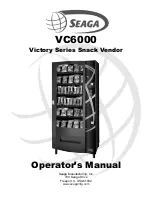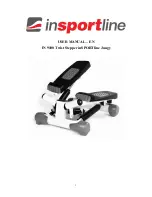
Problem Cause
Amendment
No power supply
(or machine runs slowly)
Skipping stitches
Bobbin thread
can't be drawn up
Breaking thread
Stitches too loose
or uneven
Breaking needle
Batteries installed in the wrong polarity
Batteries low/no capacity
Different capacity batteries mixed used
Adaptor power inadequate or output
connecting the wrong polarity
Needle eye not in the correct position
Needle bent
Presser foot too loose
Lower thread used up
Needle wrongly threaded
Thread blocked by lower bobbin
Faulty needle
Needle not fitted correctly
Thread tension dial, thread guide or thread
pulling bar rough
Thread blocked by upper bobbin
Upper thread too tight or lower thread
too loose
Needle bent or deformed
Presser foot too loose
Pull fabric with force when sewing
Needle not lowered into fabric when start
sewing
Replace the batteries in correct polarity indicated in
battery compartment.
Use new batteries
Use new batteries
Use compatible adaptor
Remove and reinsert a new needle
Remove and insert a new needle
Screw tight the presser foot
Replace with new lower bobbin thread
Check the machine is correctly threaded. Make sure the
needle is threaded from the front to the back
Check the machine is correctly threaded.
Remove and reinsert a new needle
Insert the needle correctly ensuring flat side is at the back
Polish with fine sand paper
Pull out the spool pin and check the thread is not wound
round pin
Adjust thread tension dial as described in manual
Remove and reinsert a new needle
Remove and reinsert a new needle, and screw tight the
presser foot
Remove and reinsert a new needle, and thread again
Remove and reinsert a new needle, thread again, turn
hand wheel to lower the needle into the fabric, and then
start sewing
Troubleshooting
Handy Tips
1.
Always start to sew with the needle
lowered into the fabric and the
presser foot lever down.
2.
To change direction: stop sewing,
ensure needle is lowered into your
fabric, raise the presser foot lever, turn
fabric, lower presser foot and start
sewing again.
3.
Only use bobbins similar to those
supplied with the machine – bobbins
vary greatly so always take one with
you to the shop when purchasing
new ones.
4.
Needles blunt very easily so remember
to change regularly.
straight from the scrap to your own
fabric. This prevents puckering at the
edge of your seam. Just cut off the
scrap when you have finished sewing.
10.
If any problems occur, always try
rethreading the machine first. Also try
rethreading the bobbins as
sometimes thread winds on unevenly.
11.
Clean out any dust or fluff from the
bobbin case regularly using a small
brush such as a paint brush.
5.
Always test your machine on scrap
fabric before commencing sewing
especially if the machine has not been
in use for awhile.
6.
Store in a clean dry place, out of direct
sunlight preferably in its box or similar
to avoid dust. Keep away from direct
heat.
7.
Always unplug after use.
8.
Do not allow to get wet.
9.
When beginning to sew at the edge of
fabric it is recommended that a small
scrap of fabric is used to start sewing
on as shown in the diagram. Sew
12
Fabric scrap
Your fabric






























